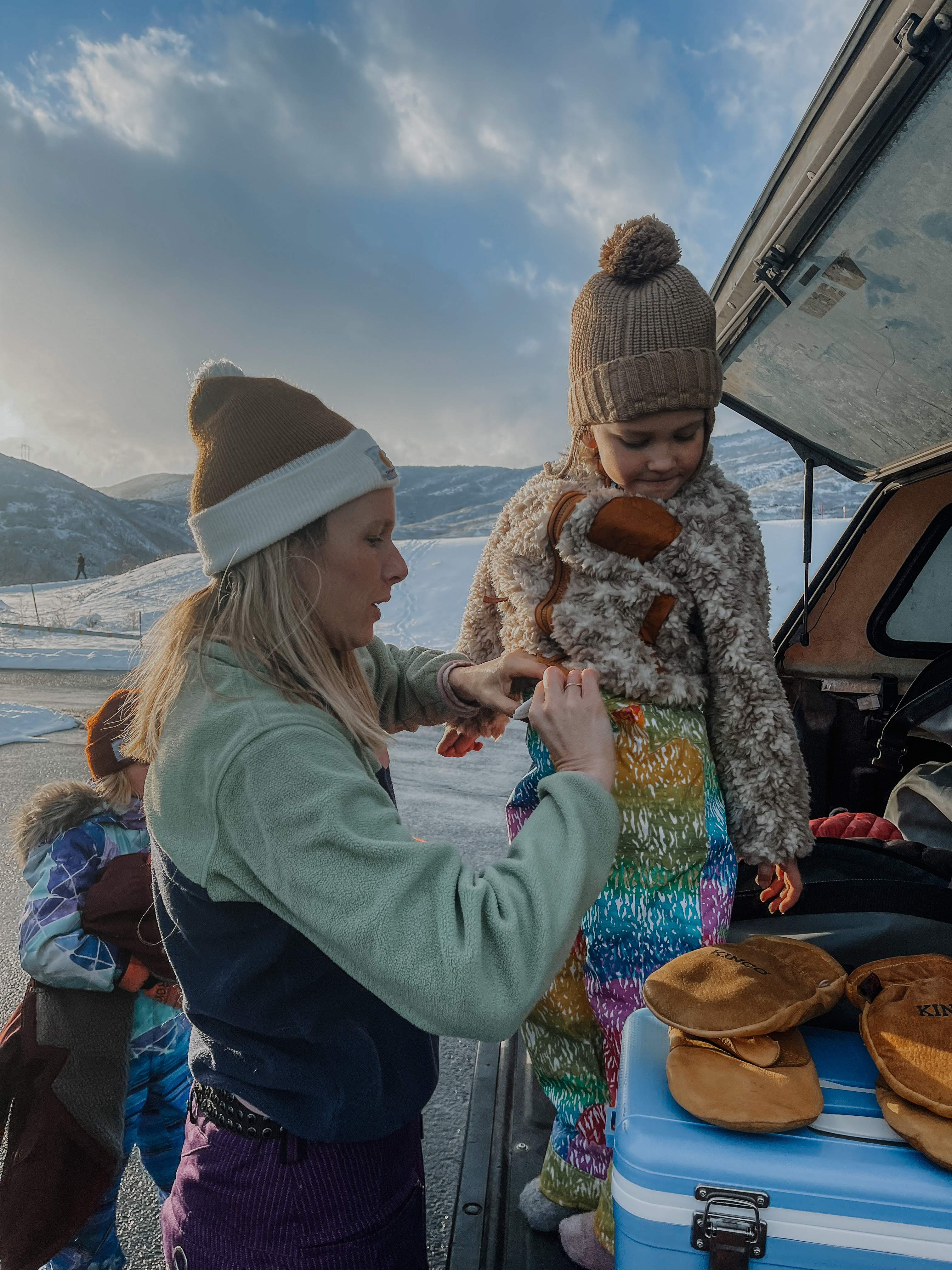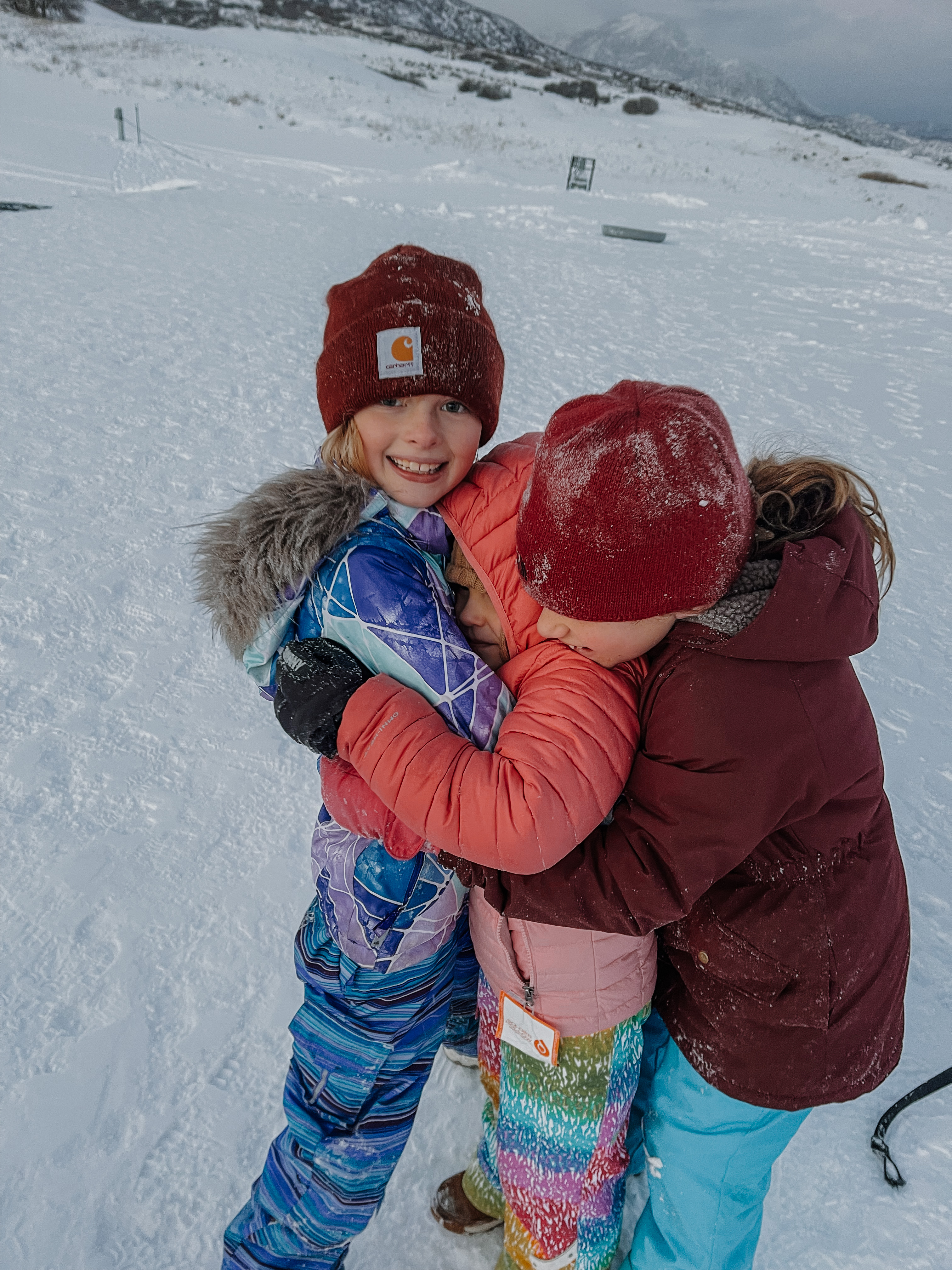There’s not much that can ruin an adventurous winter day like a freezing cold child. Believe me, I’ve been in your sherpa lined boots. Children, like the elderly, have a harder time thermoregulating their bodies. This means that they can get dangerously cold without the proper clothing or protection for the elements-and fast. Children are also fantastically enamored with the fun and beauty of nature-so much so that they can more easily ignore their body’s tell-tale signs that they need warmth.
How do I get my children to wear the proper winter clothes?
 From one parent to another, I see you on this one. Kids love to shed their layers. The fun adventures of a child’s life often make those gloves, jackets, and hats burdensome and that’s when you’ll find them tossed aside. I have found quality clothing that fits well is less likely to get tossed. Kids are very tactile so poorly fitting clothing that’s too tight or too loose restricts and impairs their movement. Properly fitting layers can often eliminate that frustration for them and leaves them more likely to keep their clothing on their body where it belongs.
From one parent to another, I see you on this one. Kids love to shed their layers. The fun adventures of a child’s life often make those gloves, jackets, and hats burdensome and that’s when you’ll find them tossed aside. I have found quality clothing that fits well is less likely to get tossed. Kids are very tactile so poorly fitting clothing that’s too tight or too loose restricts and impairs their movement. Properly fitting layers can often eliminate that frustration for them and leaves them more likely to keep their clothing on their body where it belongs.
I appreciate the rule of thumb that children should be dressed in one extra layer than an adult would wear. This allows for that “shedding” that may occur and also allows for considerations like moving in and out of vehicles and carseats/seatbelts.
Shouldn’t I trust my children to know their own clothing needs?
I’m definitely an advocate for teaching children bodily autonomy and allowing them to make decisions, but with the cold, we often have to take the protective role of insisting that proper clothing is worn.
Why?
Like I mentioned earlier, children are very easily distracted by the fun in front of them and because of the quick decline that can happen when they are exposed to the cold they will physically and emotionally deteriorate within minutes. It’s much more beneficial to instead be consistent in teaching children about having a healthy respect for the cold. Repeating very simple information to them as you dress them consistently. You will most like likely still spend a lot of time reminding them to put their coat back on, but you are setting a great foundation for them to grow upon.
How do I properly layer clothing?
Layering is such an incredible way to help your children thrive in the cold months. Layers are often separated into these 4 categories:- Base
- Middle
- Outer
- Extra
Base
The layer of clothing that sits against the skin. This layer is intended to wick moisture away from the skin so that it is not causing the body to become wet and cold simultaneously, which will lead to immediate discomfort and susceptibility to a decreased core body temperature.
We love and exclusively use wool for this layer. You can also choose a synthetic material for this as long as it’s meant to wick moisture, and fits very snug and secure. Cotton is a fiber that should be avoided in the winter clothing lineup, especially for the base layer since cotton will hold onto moisture instead of wicking it from the skin.
I consider socks to be a base layer, and all of the above considerations hold true for socks. No cotton, proper fit, and a quality material.
Middle
This layer goes directly over the base layer and helps to insulate or conserve the heat that the body is producing. This is an important layer not to skip with children, because it creates a nice, warm pocket of heat that helps keep the body temperature regulated throughout their cold adventuring.
Fleece and wool are both incredible for this task. While true wool clothing is often more expensive because of the quality and cost of manufacturing, fleece is very easy to find and a more cost effective option.
TIP: Make sure that this layer doesn’t uncomfortably restrict movement!
Outer

The last layer is meant to defeat the elements. You want this layer to be waterproof and a proper deterrent for snow, wind, rain, and wayward juice boxes.
Make sure that children can move well while wearing this layer and that it leaves room beneath for those base and middle layers.
Extra
I like to throw gloves, hats, scarves or neck protection, and shoes into their own category. These are all essential parts of a winter wardrobe. I consider gloves just as important as shoes, and compartmentalizing it this way helps me to keep this in mind when I’m dressing my own children.
Waterproof gloves are a must when sending children into the snow. Choosing gloves with straps that allow them to be secured to their coat or hung around their neck when taken off can alleviate the lost glove epidemic that I truly believe has existed since the beginning of time.
Protecting little heads and necks from the cold is so helpful in avoiding frostnip and frostbite. I personally like to let my kids help me pick out their seasonal hats and scarves once they’re at an independent age (usually around 4) so that they’re more likely-and very excited- to don that item of clothing when it’s time to go into the cold.
How to safely buckle bundled up kids
This is where that middle layer can be such an asset. To safely secure children in a seatbelt you’ll want to remove the puffy outer layers. The bulk of the layers will necessitate loosening the buckles, but because of this and the often slippery nature of the outer layer, children can slip right out of the loosened buckle and that outer layer in a high impact vehicle collision.
Preheating a vehicle to create a warm environment, and then removing your child’s outer layer once you’re at the vehicle will invite extra steps into your routine, but it’s worth the added time and attention when possible for both the comfort and safety of your children.
Stay prepared
It’s no secret that I keep my vehicle well stocked with emergency preparedness items, and the winter months pose extra challenges that I maintain enough supplies to address. Never leave home without a bag of extra warm clothing, pair of socks, gloves, hat, and scarf for each of your children and yourself. Also include towels, wool or fleece blankets, mylar blankets, and chemical hand warmers. If you plan to displace from your vehicle for an extended amount of time be sure to bring along those extra supplies in a backpack-you won’t regret it!
